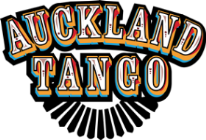Tango Mahi “Tanda of the Week” is a tanda of Astor Piazzolla music by the Swingle Singers and Astor himself.
Astor was a pianist, bandoneonist, composer, arranger and band leader, who developed a distinctive new style of tango music. His music was rooted firmly in the early concepts of tango, but then developed in many directions including as regards tempos, counter-melodies, counter-rhythms, instrumentation and harmonies, drawing from European and United States classical and jazz music as well as from his own amazing imagination.
He was born in March 1921 in Argentina, and as a four year old moved to New York with his family. At age eight he was given a bandoneon by his father, then from age 11 began to immerse himself in music, listening to his father’s classical, jazz and tango music records, taking classical piano lessons and teaching himself to play classical music on bandoneon.
After appearing in a cameo acting role in a Carlos Gardel film, Gardel invited Astor (age 15) to join him on a tour to South America, but he was forbidden by his father who said he was too young, which was lucky for Astor and everyone who loves tango music, as the flight to Colombia crashed, killing Gardel and all others on board.
The following year, the Piazzolla family returned to Argentina and in 1938 Astor joined the Troilo orquesta as an arranger and fourth bandoneon player. In time he became a principal arranger of the orquesta’s music before leaving in 1946 to form a new orquesta with Troilo’s vocalist Francisco Fiorentino. The new orquesta was good but not as popular as others for tango dancing and in 1950 he left Buenos Aires to base himself in New York, from where he travelled to Europe to take advantage of the prize from a classical composition competition that he had won in Argentina.
Over the subsequent four decades until he passed away in 1992, he spent time living in New York, Buenos Aries and Paris, gradually achieving worldwide recognition for the quality of his music and in particular, his contributions to tango. Notable accomplishments included:
- Composing classical, tango and jazz music for dozens of film scores and television programs
- Releasing hundreds of recordings of his own compositions on many dozens of albums
- Having his music adopted to launch new styles of tango dance; under the name of tango nuevo
- Having his music performed, recorded and released as covers by thousands of other musicians, bands and orchestras worldwide
- Touring the world with many of the world’s best musicians playing tango, jazz and classical music, most of which he composed
The three tangos I have chosen for the tanda:
“Libertango” by The Swingle Singers
This very danceable version of one of my favourite songs is sung “a cappella” (i.e. vocals with no supporting instruments).
“Canto y fuga (Chant et fugue)” by Piazzolla
I have included a YouTube clip of the Lombard Twins dancing a choreographed contemporary nuevo dance to this fugue, as an example of dancers going well beyond the boundaries of what is generally recognised as tango or show tango.
“Oblivion” by Piazzolla
This beautiful slow moody track is one of Piazzolla’s most famous compositions and recordings. The following YouTube clip is of tangueros Refik Unluer and Emily-Rose Sarcova (and others) dancing to the song at one of their Tuesday night milongas in Oxford Street, Sydney, as an example of simple, musical, improvised, social dancing to Piazzolla.

